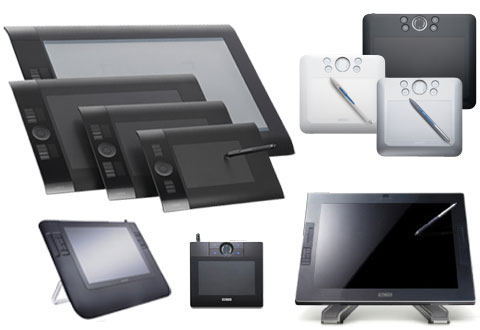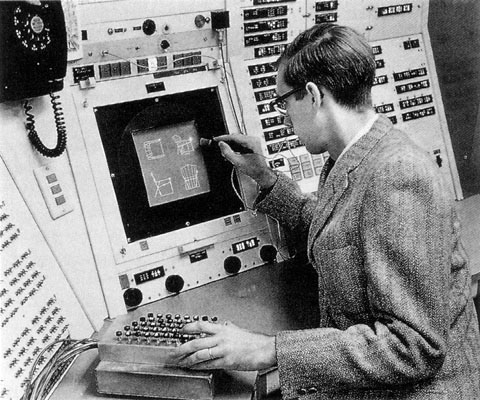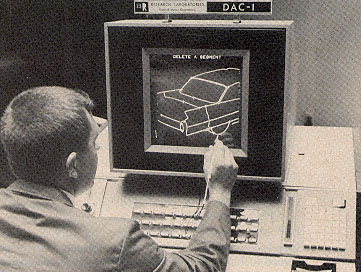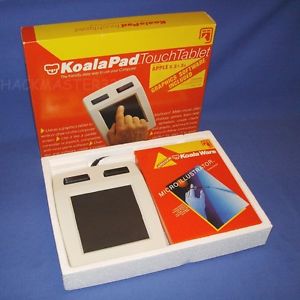In 1963, Ivan Sutherland developed a program called Sketchpad (or Robot Draftsman) which made human-computer interaction much more intuitive. This program was revolutionary in both the programming and art world, pioneering into object-oriented software and advances in 3D modeling. Users could draw upon the screen using a light pen, which was essentially a stylus attached to the machine by a single wire. The cathode ray tube monitors of the time held the natural ability to constantly scan for the light pen’s proximity. If the pen was touching the display, a signal could be sent through the program, creating lines wherever the user placed it. With the rise of LCD screens, cathode ray tubes fell out of style and this method became obsolete, but it was very popular until the 21st century.
General Motors was one of the first companies to integrate computers into their design process, and, partnered with IBM, developed the first computer aided design (CAD) system in order to streamline the creation, modification, analysis, and optimization of vehicle design. Unveiled in 1964, the system was named DAC-1 (Design Augmented by Computer). Utilized and modified until its replacement in the 1970’s, DAC-1 was the first system that was capable of creating and editing 3-D graphic models. A vehicle’s design process was arduous, requiring that a physical drawing pass through multiple departments and re-edited. Keeping track of the designs themselves was difficult with various departments working at one time. Therefore, the DAC-1 worked wonders, allowing each department to access and edit the same file within the system, and was updated immediately.
The modern form of a light pen is a graphics tablet, which is an essential tool for any digital artist. A graphics tablet increases efficiency and productivity massively, because, where drawing is concerned, the mouse tends to be a hindrance.
The first early drawing tablet was patented by Elisha Gray in 1888, and was called the Telautograph. The device sat upon a desk and looked like an odd sort of typewriter with a scroll of paper in the middle. Someone wrote or drew on the transmitting Telautograph as it sent electrical pulses of information to the receiving one, with which it recreated the drawing or writing. Explaining his invention, Elisha Gray is quoted as saying, “By my invention you can sit down in your office in Chicago, take a pencil in your hand, write a message to me, and as your pencil moves, a pencil here in my laboratory moves simultaneously, and forms the same letters and words in the same way.”

Other notable advances in the graphics tablet industry were the Stylator in 1957 and the RAND tablet in 1964. These both resembled the modern tablets preferred by today’s artists. The RAND tablet was extremely expensive, though. With a whopping $18,000 ($130,000 in today’s money) price tag, consumers never considered buying one. Apple released its Graphics Tablet for Apple II in 1979, but it, too, was a failure because of the high cost. The first reasonably priced tablet ($195) was the 1984 KoalaPad, which allowed kids to draw on a home computer with their fingers or the attached stylus.
The modern graphics tablet industry is led by the company Wacom, which was founded in 1983. Some of Wacom’s more advanced tablets actually incorporate an LCD screen so that the artist can draw straight onto the tablet while the same picture is mirrored on the computer screen. Wacom tablets can range from 6 x 3 inches to double that size, and prices vary from $70 to $1,700.




